What's New
Displaying results 1391 - 1400 of 4052
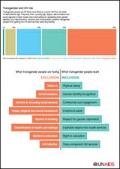
Resource | Fact Sheets,
Transgender people are 49 times more likely to acquire HIV than all adults of reproductive age. They face, from a young age, stigma, discrimination and social rejection in their homes and communities for expressing their gender identity. Such discrimination, violence and criminalization prevent transgender people from getting the HIV services they need stay healthy.
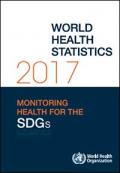
Resource | Publications,
The World Health Statistics series is WHO’s annual compilation of health statistics for its 194 Member States. The series is produced by the WHO Department of Information, Evidence and Research, of the Health Systems and Innovation Cluster, in collaboration with all relevant WHO technical departments.
World Health Statistics 2017 focuses on the health and health-related Sustainable Development Goals (SDGs) and associated targets by bringing together data on a wide range of relevant SDG indicators. In some cases, as indicator definitions are being refined and baseline data are being collected, proxy indicators are presented. In addition, in the current absence of official goal-level indicators, summary measures of health such as (healthy) life expectancy are used to provide a general assessment of the situation.
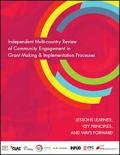
Resource | Publications,
This independent review, commissioned by the Community, Rights and Gender (CRG) Department at the Global Fund Secretariat, shares findings, conclusions, and recommendations for enhancing the meaningful engagement of communities in all phases of Global Fund grants, with an emphasis on grant making and grant implementation. The review synthesizes lessons learned and good practices for how communities engage meaningfully, and identifies key principles and strategic actions the Global Fund can take to ensure greater accountability between communities, Country Coordinating Mechanisms, other key stakeholders, and the Global Fund itself.
It is important to note that HIV, tuberculosis (TB), and malaria disproportionately affect certain groups as a result of social and economic inequities that persist worldwide. These groups are often criminalized and experience human rights abuses, seriously compromising their access to health services. These groups are also uniquely positioned to take action in response to disproportionate disease burden and their social and structural drivers.
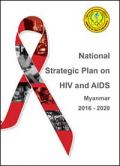
Resource | Guidelines,
The Republic of the Union of Myanmar’s National Strategic Plan on HIV/AIDS 2016–2020 is the strategic guide for the country’s response to HIV at national, state/regional and local levels. The framework describes the current dynamics of the HIV epidemic and articulates a strategy to optimize investments through a fast track approach with the vision of ending HIV as a public health threat by 2030. Myanmar’s third National Strategic Plan (HIV NSP III) issues a call to all partners to front-load investments to close the testing gap and reach the 90–90–90 prevention and treatment targets to protect health for all.
This strategy builds upon Myanmar’s political commitment and the achievements of the previous HIV NSP II, and is aligned with the Three Ones principles and guides the country to focus on geographical, population and intervention priorities to ensure the greatest impact.
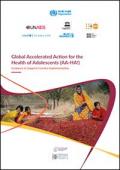
Resource | Guidelines,
Adolescents are not simply old children or young adults. This deceptively simple observation lies at the heart of Global Accelerated Action for the Health of Adolescents (AA-HA!): Guidance to support country implementation, which reflects the coming of age of adolescent health within global public health.
For years, the unique health issues associated with adolescence have been little understood or, in some cases, ignored. But that has now changed. Adolescent health and development was made an integral part of the Global Strategy for Women’s, Children’s and Adolescents’ Health (2016–2030) (The Global Strategy) because, in the words of the United Nations Secretary-General, “[adolescents are] central to everything we want to achieve, and to the overall success of the 2030 Agenda”.
This Guidance is a milestone for translating the Global Strategy into action. It provides a wealth of information to policy-makers, practitioners, researchers, educators, donors, and civil society organizations – including the most up to-date data on the major disease and injury burdens that affect adolescents. It supports the implementation of the Global Strategy by providing the comprehensive information that countries need to decide what to do for adolescent health, and how to do it. It builds on on-going efforts to ensure that adolescents can Survive, Thrive and are in a position to Transform the societies in which they live.
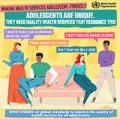
Resource | Infographics,
Adolescents (aged 10 – 19 years) are unique. Not only is adolescence a period of life when people are particularly vulnerable to certain health issues, it is also a time when critical behaviours are shaped that will affect health in the future. They need quality health services that recognize this.
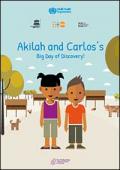
Resource | Publications,
People and families have been arriving in Narneen for what seems like forever. Everyone is different, with different habits, ways of talking and dressing. They have many stories about how they came to be here – some lost their homes during wars, others lost their land and crops to drought and some came to Narneen in search of a better life. This is the story of two of Narneen’s adolescents, Akilah and Carlos, who embarked on an adventure and discovered the importance of the role that all children and adolescents can play in their communities.
AA-HA! Stands for Accelerated Action for the Health of Adolescents. It also means “Ah, now I understand!”. Every adolescent is unique, with diff erent needs and concerns. AA-HA! are suggestions to governments to help them to make sure YOU understand your health-related rights, and that you are helped to have the best possible chance to survive, thrive, and be in a position to help to transform the society you live in.
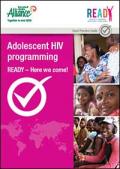
Resource | Guidelines,
A greater understanding of HIV in high prevalence countries has increased awareness of the need to prioritise adolescents in HIV prevention, treatment, care and support. At the same time, a growing recognition that adolescence is a distinct time of life has focused attention on adolescents’ different needs. Adolescents are now included as a separate target group in global and national strategies.
This Good Practice Guide was developed to offer programme managers and service providers concrete implementation guidance and support as they seek to address adolescents’ needs more effectively. It is intended to shape a provider’s approach and work so that adolescents living with HIV and those from key populations can obtain the services they need and live healthy, productive lives. The Good Practice Guide is shaped by the principles of the Positive Health, Dignity and Prevention Framework, with adolescents and young people at the centre, managing their own health and well-being.
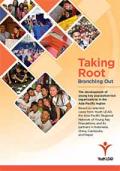
Resource | Publications,
At national level, some of Youth LEAD’s focal points in the Asia-Pacific region have gone on to establish networks of their own, participate in decision-making, and have brought about positive change for their communities. This report attempts to capture the development phase of young key population-led organizations as selected among Youth LEAD’s focal points largely funded as the sub-grantees of the Robert Carr civil society Networks Fund (RCNF), observe the varying levels of success of this process, and identify common elements and challenges. Furthermore, this report aims to produce recommendations for donors and stakeholders wanting to support a comprehensive response to HIV and keen to engage with young key populations (YKP). Finally, recommendations from this report can help guide YKP in establishing networks for themselves and their peer, in the process promoting and exercising the right to equal participation for YKP.
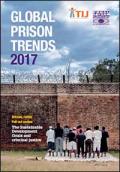
Resource | Publications,
The Global Prison Trends 2017 report by Penal Reform International, in collaboration with the Thailand Institute of Justice, provides a window to one of the least visible and least accessible government sectors, while highlighting some of the most intractable correctional issues for policy makers across the world. Prison overcrowding, inhumane treatment and the rising number of vulnerable groups of prisoners are problems that have long been listed as primary challenges when it comes to prison management. Yet the problems still persist in many parts of the world today, necessitating a new perspective and approach for criminal justice reforms.
With 2017 marking the second year since the adoption of the SDGs, in addition to the global overview of current prison situations, the Special Focus section of this report focuses on the links between the SDGs and effective criminal justice systems and discusses the ways forward.





